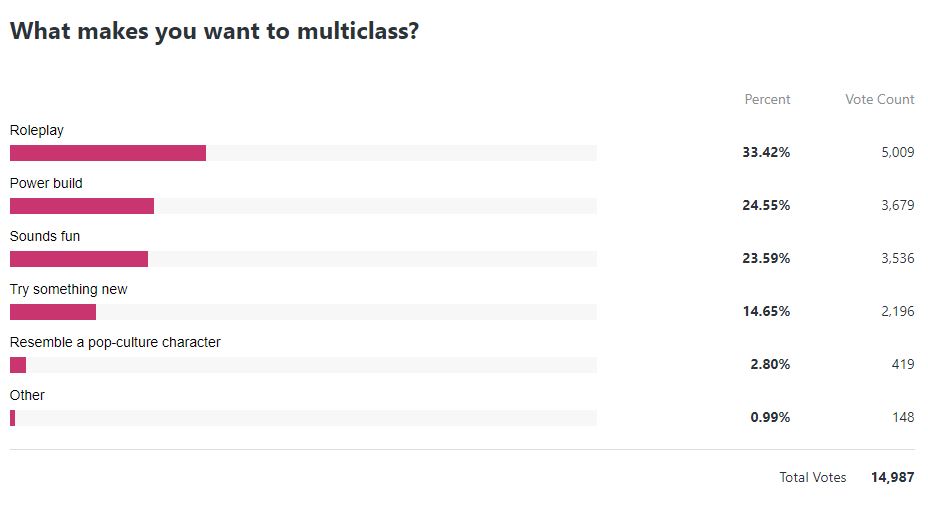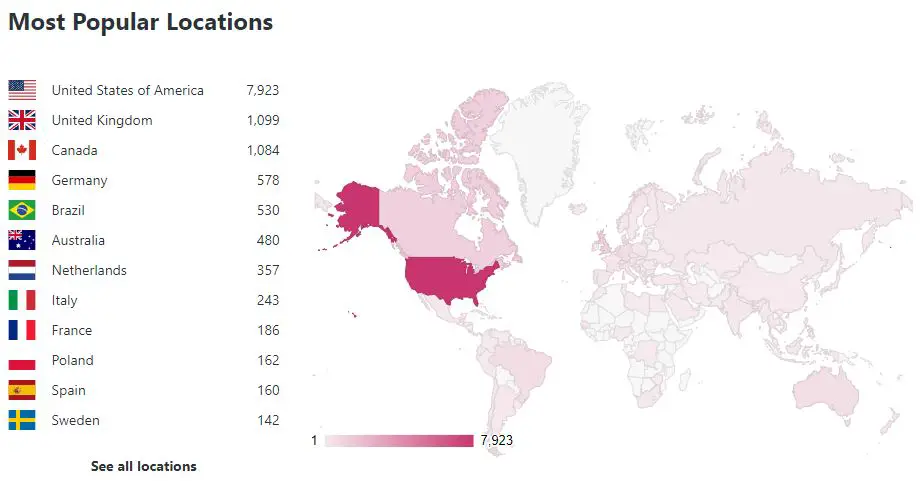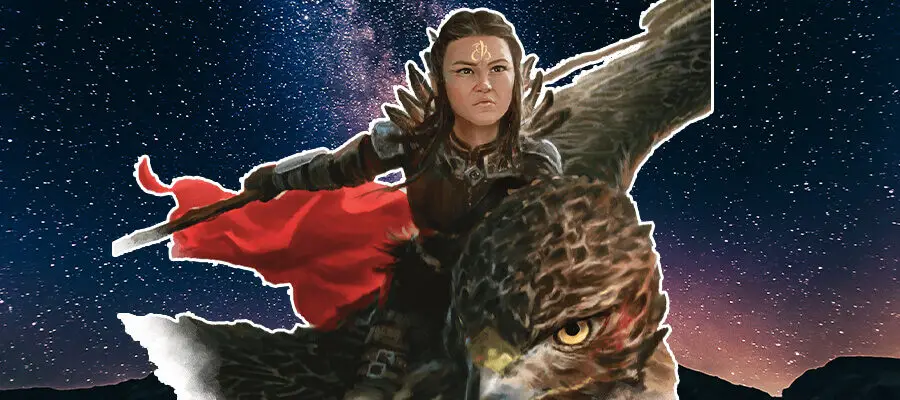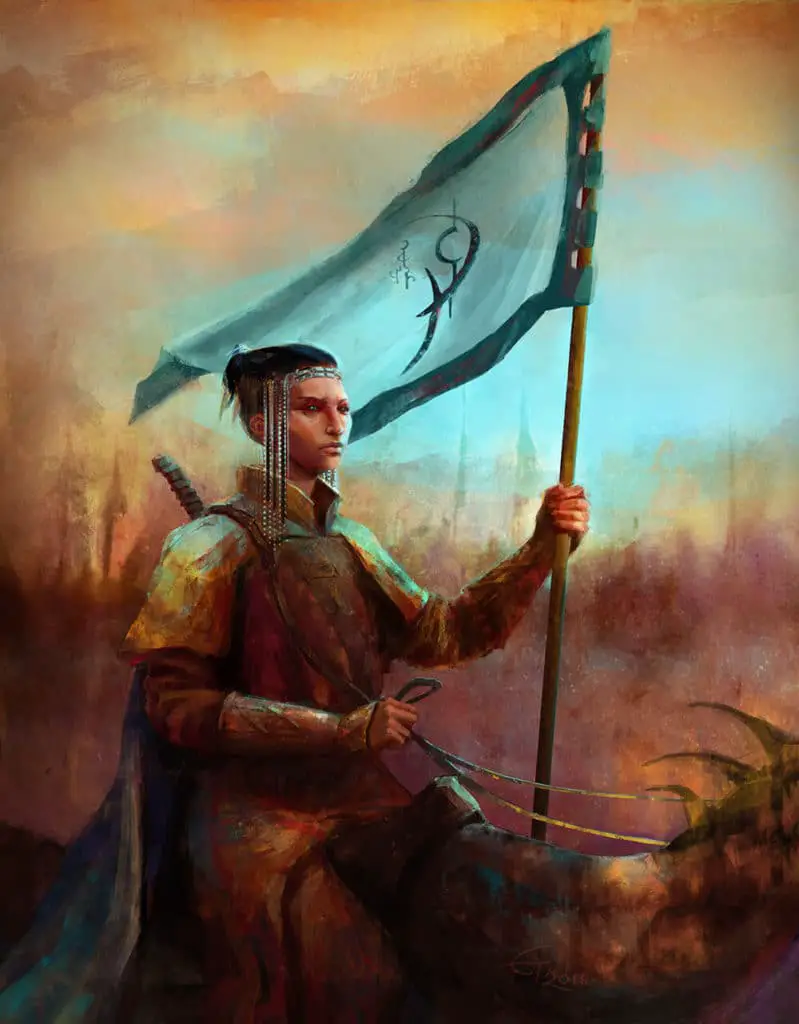D&D 5e player multiclassing reasons article featured image is a combination of images from Denis Degioanni via Unsplash and Eberron: Rising from the Last War. This article contains affiliate links to put gold in our coffers.
Many power builds in D&D 5e involve multiclassing. There are countless character builds on YouTube, Reddit, and other corners of the internet. I noticed a shift in recent years when I observed players talking about multiclassing; they were focusing on roleplaying, re-flavoring, and other concepts that aren’t necessarily about building effective characters. Roleplaying and optimizing are not mutually exclusive, but I wondered what players are prioritizing these days, so I asked them.
The following data is based on responses freely given by visitors of Flutes Loot pages that contained the poll. Pages that contained the poll were relevant to multiclassing, indicating the person who took the poll had likely searched for something related to multiclassing in their search engine of choice to get to the page.
Poll Results: Why Multiclass According to D&D 5e Players

Surprisingly, the majority of respondents indicated roleplaying is their main goal when they multiclass. This goes against what I see optimizers discuss in Discord servers that are devoted to optimization. Optimizers typically embrace the “flavor is free” mantra, meaning they play what is mechanically effective while narratively changing why those mechanics work the way they do (re-flavor). An example would be an Echo Knight Fighter who uses ghosts for their abilities instead of alternate reality versions of themselves per the subclass’ written lore.
Do you want to take the poll? You can do so here:
Poll Respondent Locations by Country
Here are the locations of respondents if you care to know more about the poll. The most popular countries are not surprising.

What Do You Think of This Data?
I’m curious to hear your thoughts about why players are favoring roleplaying over other factors when they multiclass. How do you feel about multiclassing?
Cast Message in the comments section below to tell me what you think. You can find more D&D 5e multiclassing articles here.





I’ve been running games for 20+ years now. The reason I bring that up is that in all of that time, only once out of almost one hundred multiclassed characters has a multiclass ever been spurred on for roleplaying reasons. This one case actually was a detriment to their build. All other builds had a mechanic based motive.
I’m not saying the data is wrong, I just find it interesting and would like to see more information on the reasons why people answered the way they did.
I’d love to know more about why people answer as they do! Maybe there’s a stigma towards power building.
I’ve played for a few years now, and in that time have created a number of characters, the vast majority of which are multiclassed. In one case, it was *purely* roleplaying, in the rest it was varying combinations of roleplaying and mechanical.
The full roleplaying one was *technically* not by choice, but literally a result of the game, where my Life Cleric took on a level of Warlock with an unknown patron. This was 100% story. There’s also a variation of her from a time hop session we did that I called her “Bleak Future” version, where the party didn’t win against the threat and she was unable to reunite with her girlfriend. This version has a dip into Wizard as a result of trying to find a way to find and get her girlfriend back from the plane she’s trapped on.
One of my most developed characters is my Soulknife, which has multiclassed twice, both of which primarily for roleplaying reasons. Her initial multiclass was into Bard, a development largely spurred by the death of one of the few friends she had at the time (the party Cleric), though struggled with which school until eventually learning about the Skalds of the northern lands and eventually learning their methods (a homebrew “Skald” bard subclass). That Bard dip was recently replaced by the Raven Queen Warlock UA from a few years ago, after an ordeal in the Shadowfell and meeting her goddess (the setting’s death god and rough equivalent to the Raven Queen). In both cases, the multiclass served very little mechanical benefit to her core combat ability, but granted her utility and storytelling features. This one I would say is about 80-90% story, 10% mechanical (her ability to heal was pretty crucial earlier on after that incident).
I also have another rogue that at this point is more fighter than rogue. I call her build the Arcane Knight. This one’s *largely* mechanical, but the mechanics were also pretty story driven. She started as an Arcane Trickster Rogue, and I’d intended to multiclass into Eldritch Knight Fighter, but I’d originally intended to be more Rogue than Fighter. Ultimately, she has ended up Rogue 7, Fighter 13, due to the demands of the story she’s in, making her more of a Dex-based tank. I’d put her build as 50% mechanical, 50% story.
A lot of my builds at the very least originate from mechanics that support a story-based concept, such as my Deep Sea Swashbuckler — a Deep Sea Paladin and Swashbuckler Rogue who is like that because her father is an Ancients Paladin, her mother’s a Rogue, and she grew up in a port town and on boats at least as much as on land — or my Battlemaster Barbarian, who started as a Battlemaster until her Barbarian side (which she got from her father) manifested after finding out the attack on her old ship (of which, she was the sole survivor, because of her half-orc nature) wasn’t mere pirates. Both of these particular characters came about as the result of exploring “what would be the result of this combination of factors?” and the mechanical part followed, based on what I was going for with the creative concept.
Thank you for sharing such a thorough overview of how you’ve handled multiclassing with your characters, Dragonwolf! The self-awareness of these character choices is admirable.
I find the lack of a separation within “power build” and the lack of a “cover a gap in the group” option unfortunate. It likely drove a number of additional votes into “roleplay” out of the pure aspect that D&D is a group based game. Any lopsided or lack of divine/utility classes can easily see one or more of the party dipping into spells and features they hadn’t otherwise planned to touch were more support/utility was available.
Pure action economy alone given the fixed-difficulties of most pre-written encounters dictate the group or party (secondary) decisions/development as much as a players simple desire to have their character be the best they can be (be it for roleplay, social, min-maxing or to cover a role/utility gap no one else can as easily). Play drives progresses almost as much as any initial thematic plan.
e.g. I once had a ranger, greatest archer in the land second to none and defender of all things useful. yet the only time i ever drew my bow was in set-piece or out-door combat because almost every tunnel, door and choke-point in that campaign was 10 foot wide. So as the second most tanky character in that campaign i’d be there dual wielding (with a buckler lashed to my arm, sometimes 5E/beyond streamlines too far) next to the warrior to plug the gap while the casters laid down support fire (then my held action would come up, i’d stab at something opportunistic then get back to playing off-tank next round). Refused to change spec even when offered but my gear inevitably leaned deeper into that role-reality as a frontliner who lived for ranged engagements
Yeah, I’d like more data and clarity from the results.